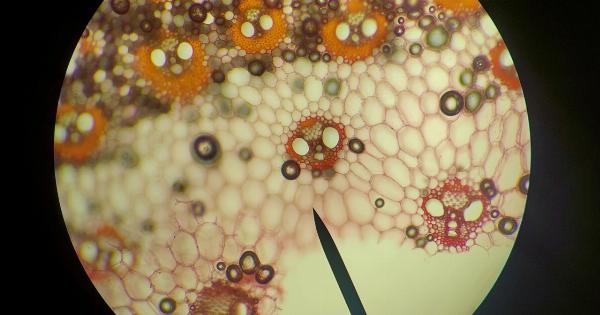Introduction
Asthma is a chronic respiratory disease that affects millions of people worldwide. It is characterized by inflammation and narrowing of the airways, leading to symptoms such as wheezing, coughing, and shortness of breath.
While there are several treatment options available for asthma, not all patients respond well to conventional therapies. In recent years, biological therapy has emerged as a promising treatment approach that offers improved outcomes for patients with severe asthma.
This article explores the use of biological therapy in improving asthma outcomes and highlights its potential benefits.
Understanding Asthma
Asthma is a complex disease with various underlying factors.
It is generally categorized into two types: allergic asthma, triggered by exposure to allergens such as dust mites, pollen, or pet dander, and non-allergic asthma, which is typically associated with factors like respiratory infections, exercise, or stress. In both types, the immune system plays a critical role in provoking an inflammatory response, resulting in the bronchial constriction and increased mucus production seen in asthmatic patients.
Conventional Treatment Options for Asthma
The management of asthma primarily involves the use of bronchodilators and anti-inflammatory medications that are delivered through inhalers or nebulizers.
These medications are effective in controlling symptoms and reducing the frequency and severity of asthma attacks. They include beta-agonists, corticosteroids, leukotriene modifiers, and mast cell stabilizers, among others. However, some patients, particularly those with severe asthma, may not experience sufficient relief with these medications alone.
The Rise of Biological Therapy
Biological therapy, also known as biologic drugs or targeted therapy, is a relatively new treatment approach that aims to address the underlying causes of asthma rather than solely targeting the symptoms.
This therapy involves the use of genetically engineered proteins or monoclonal antibodies that specifically target and modulate certain components of the immune system responsible for the inflammatory response seen in asthma.
How Biological Therapy Works?
Biological drugs used in the treatment of asthma can target different molecules and pathways involved in the immune response. One commonly targeted molecule is immunoglobulin E (IgE), which plays a crucial role in allergic asthma.
By binding to IgE, biologic drugs prevent it from attaching to immune cells and triggering the release of inflammatory mediators, thus reducing allergic reactions and subsequent asthma symptoms.
Asthma Subtypes and Targeted Biologic Therapies
Recent research has shown that asthma is not a homogenous disease but consists of several subtypes, each characterized by different underlying mechanisms and inflammatory pathways.
This understanding has paved the way for the development of targeted biologic therapies that can be tailored to individual patients based on their asthma subtype.
Omalizumab for Allergic Asthma
Omalizumab is a monoclonal antibody that is used in the treatment of allergic asthma in patients with inadequate response to conventional therapies. It works by binding to circulating IgE antibodies, thus preventing their interaction with immune cells.
Omalizumab has been shown to reduce symptoms, improve lung function, and decrease the frequency of asthma exacerbations in patients with allergic asthma.
Mepolizumab, Reslizumab, and Benralizumab for Eosinophilic Asthma
Eosinophilic asthma is characterized by a high number of eosinophils, a type of white blood cell, in the airways.
Mepolizumab, reslizumab, and benralizumab are biologic drugs that specifically target interleukin-5 (IL-5), a protein that plays a crucial role in the production and survival of eosinophils. By blocking IL-5, these drugs reduce eosinophil levels, decrease airway inflammation, and improve asthma control in patients with eosinophilic asthma.
Dupilumab for Type 2 Inflammatory Asthma
Type 2 inflammatory asthma is characterized by the activation of inflammatory pathways involving proteins like interleukin-4 (IL-4) and interleukin-13 (IL-13).
Dupilumab is a biologic drug that targets IL-4 and IL-13 receptors, thereby inhibiting the inflammatory response associated with this asthma subtype. It has demonstrated significant improvements in lung function, asthma control, and quality of life in patients with type 2 inflammatory asthma.
Benefits of Biological Therapy
Biological therapy offers several advantages over conventional asthma medications.
Because it directly targets specific molecules and pathways involved in the immune response, it can provide more personalized and precise treatment for patients with specific asthma subtypes. This leads to improved asthma control, reduced symptoms, and a decreased reliance on rescue medications.
Furthermore, biologic drugs have been shown to reduce the frequency of asthma exacerbations and improve lung function, ultimately enhancing the overall quality of life for asthma patients.
Considerations and Side Effects
While biological therapy has shown significant promise in improving asthma outcomes, it is essential to consider certain factors before initiating treatment.
Biologic drugs are generally reserved for patients with severe asthma who have not responded adequately to conventional therapies. Moreover, these medications are typically administered by subcutaneous injection or intravenous infusion, which may require additional medical supervision and monitoring.
Common side effects of biologic therapy include injection site reactions, allergic reactions, and a slightly increased risk of certain infections.
The Future of Asthma Treatment
The introduction of biological therapy has revolutionized the management of asthma, particularly for patients with severe and difficult-to-treat asthma.
As our understanding of the underlying mechanisms and subtypes of asthma continues to advance, the development of more targeted and effective biologic therapies is expected. With ongoing research and advancements in this field, the future of asthma treatment looks promising, offering hope for improved outcomes and a better quality of life for asthma patients.



























